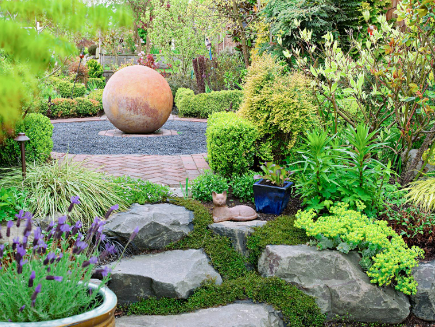What is your landscaping zone, and why does it matter? There may be a good reason why you haven’t been able to grow plants or flowers in your garden. Before you sell your gardening equipment and throw in the towel, you should read this article. You may have a green thumb after all.
You may have wondered if there is an online tool that can help you determine what plants grow well in your area. You may have heard about landscaping zone maps but not know what they mean or why they are important. It’s easy to determine which zone you fall into, but it isn’t so simple to decipher what this means for gardening success. This article will explain how landscaping zone maps help you determine what plants thrive in your region.
Find Your Zone:
Identifying the hardiness zone of a plant is the best way to determine where it can grow. North America has 11 zones. Zone 1 describes subarctic conditions, while Zone 11 describes tropical regions in Southern Mexico. The further north you are, the lower the plant hardiness zone number. Referring to the Zone Map is the most reliable method to determine your landscape zone. The map is based on the average minimum winter temperature, divided into 10-degree F zones.
Why Zones Matter:
Plant Hardiness Zone Maps are a standard that gardeners and growers use to determine what plants work best for their region based on weather conditions and local factors. This map is a great tool to help you decide which plants will work best for your region. However, it doesn’t guarantee that a plant can survive in certain conditions.
Limitations:
This Plant Hardiness Zone Map is a useful tool, but it has some shortcomings. It may not provide accurate information based on your microclimate. Even if you know that a particular plant thrives in your region, other factors such as soil pH, moisture, wind, and elevation can have an impact on its ability to grow. Even if the temperature is right for a plant, environmental conditions may make it difficult to survive.
Microclimates:
When examining this map, it’s important to take into account microclimates. For example, while coastal Seattle and dry Tucson are both in Zone 8, the same plants may not grow in either place. You may assume that a plant that grows well in Seattle will also do so in Tucson because they’re in the same zone. This is unfortunately not always true. Although they may have similar weather temperatures, other environmental factors can influence the success of the plants in blooming. Keep this in mind when deciding what to plant.
Landscape Design:
Due to the limitations of hardiness zones, it’s helpful to work with a local specialist to ensure you select the right plants for the microclimate. The Radiant Landscape Design and Build will provide you with expert advice to help you create a landscaping design that will make your neighbors jealous. Consult with us before purchasing your landscaping to save time, money, and frustration. To learn more, request an estimate today!
This post was written by a professional at Radiant LDB. Radiant LDB proudly provides landscaping services, including landscape design and installation services, for folks throughout Northern Colorado. We are a family-owned and operated company based in Fort Collins, and we’re dedicated to creating picturesque landscapes for our neighbors throughout the region.

